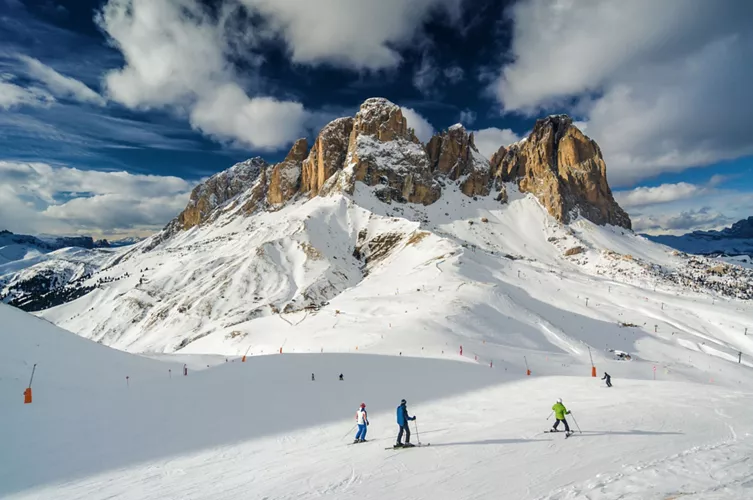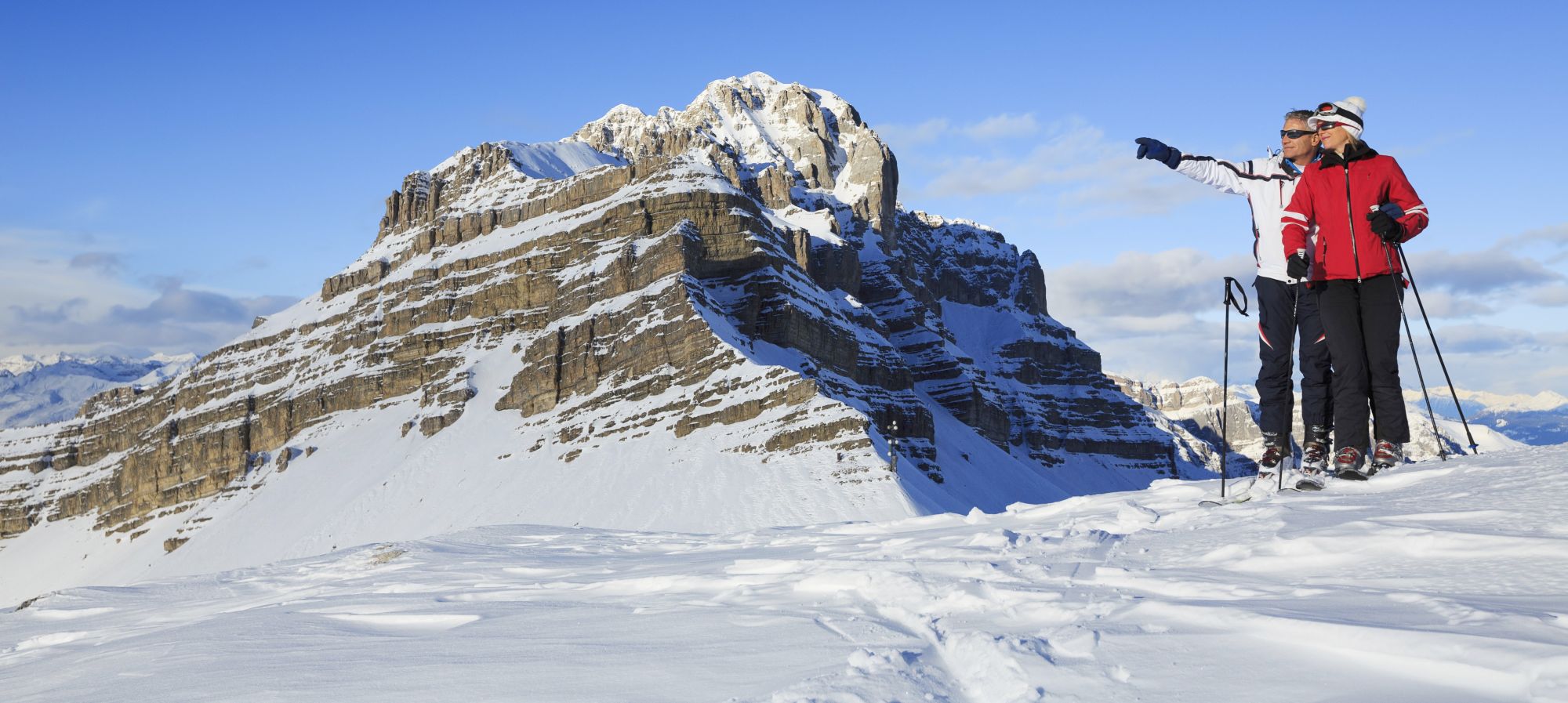Trentino is sure to amaze you with its immense natural heritage, the spectacular splendor of the Dolomites, and fascinating sites steeped in history
Discover Trentino’s culture of slow travel, taking the time to savor every corner of nature and cultural trails and educational farms. You will find hundreds of hotels offering wellness centers for truly relaxing holidays for the whole family in some of Italy’s most beautiful villages, set in unique landscapes.
Offering an extraordinary variety of landscapes, with majestic peaks, forests, wide valleys, watercourses, lakes, and an enchanting play of light among the peaks of the Dolomites, Trentino is a paradise for winter sports and outdoor activities.
Whether you go to enjoy skiing in winter or hiking in summer, Trentino offers plenty of opportunities for relaxation and wellness.
1. Origins and history of Trentino

Inhabited in the 2nd century BC by the Reti people, a small community of shepherds and farmers, the territory of Trentino was part of the Prince-Bishopric of Trento for almost eight centuries.
Dozens of Prince-Bishops succeeded one another, with Bernardo Clesio, in particular, restructuring the city and the Principality.
From 1545 to 1563, the restructuring of the Catholic Church was decided here, at the three sessions of the Council of Trent.
Having passed under the control of Austria, Trentino returned to Italy at the end of the First World War with the Treaty of Versailles of 28 June 1919.
Today, it is one of the most popular regions for mountain lovers, with its slow pace, sports, and unique views that only mountain passes can offer, such as the Rolle Pass in the Dolomites.
2. Main cities in Trentino

The beating heart of Trentino is the city of Trento, nestled in the Adige River valley and dominated by the Buonconsiglio Castle, the historic residence of the Prince-Bishops. It is also worth visiting the MUSE science museum, which offers interactive games and immersive environments, in a building designed by Renzo Piano.
Rovereto, a stone’s throw from Lake Garda, has been an important industrial, tourist, and cultural hub in the region since the 18th century.
As you head north, you will find yourself among the vineyards of the Piana Rotaliana, including the renowned wine-growing area of Mezzocorona, considered “the most beautiful vineyard garden in Europe”.
Val di Non is just around the corner, with the town of Cles, which lies 650 meters above sea level on the western shore of Lake Santa Giustina.
As you reach Marmolada, the highest mountain group in the Dolomites, you will find Moena, one of the municipalities of the Magnifica Comunità di Fiemme, and the famous Canazei, part of the Dolomiti Superski linked ski area.
3. What to see in Trentino

There is something amazing around every corner in Trentino, starting with the many valleys in the Dolomites.
The Fassa and Fiemme valleys, at the foot of the mountain range, are a great place to visit all year round, with state-of-the-art facilities and scenic cycle paths, not to mention some of the most impressive passes in the Dolomites, from the Sella Pass to Pordoi Pass.
Val di Tires offers a unique view of the majestic, 3,000-metre-high Catinaccio mountain massif. Val di Sole, along the Noce River, is the ideal destination for a fun skiing holiday. Further south is the Latemar mountain range, with its circular shape, and the popular Ski Centre with trails suitable for all.
Trentino is also home to many picturesque lakes. Near Riva del Garda, which sits beside the magical Lake Garda, the small Lake Ledro awaits you, with many fantastic villages and thousands of pile dwellings dating back to the Bronze Age. Further north, it is worth taking a trip to Lake Molveno, a natural oasis far from the city.
And if you find yourself near Trento, the nearby Monte Bondone will offer plenty of opportunities to spend time outdoors in safety and tranquillity.
4. Unusual places in Trentino

If you are traveling with children, we highly recommend stopping at the Dragon Forest, an easy mountain walk at an altitude of 1,650 meters in Gardonè, with land art and traveling shows along the trail. If you want to follow in the footsteps of dinosaurs, keep an eye out for the Gorges of Dro trail, which winds through a desolate landscape to Lake Cavedine.
The Piana Rotaliana is one of the most renowned wine-growing areas in Trentino. You can discover its delicious soul along the Trentino Wine and Flavours Route before exploring the Orrido di Ponte Alto, a deep canyon carved by the waters of the Fersina torrent, with two shimmering waterfalls over 40 meters high.
In the hilly landscape of Garda Trentino, you will be left enchanted by Canale di Tenno, a small mountain village dating back to the 13th century. Walking through its narrow streets is like stepping into a storybook!
5. Typical Trentino products

Trentino is sure to win you over with its typical products linked to centuries-old traditions.
We recommend ordering a charcuterie board to discover delicacies such as Carne Salada cured meat and ciuiga del banale sausage, paired with cheeses such as Puzzone di Moena and Trentingrana, also known as Grana del Trentino.
Canederli, boiled dumplings in broth, are a perfect first course to warm up after a day in the mountains, accompanied by a glass of Teroldego, the king of local wines.
If you’re celebrating, why not uncork a bottle of Metodo Classico Trentodoc, a sparkling wine produced since the mid-1800s?
If you’re looking for something delicious and healthy, you will love the apples of Val di Non, as well as the rare, premium-quality radicchio dell’orso (alpine blue-sow-thistle), found among the mountain pastures between 1,900 and 2,300 meters.
6. Trentino events

Trento’s Christmas markets are the perfect opportunity to discover Trentino during the Christmas period. Every year from the end of November to the 9th of January, Trento is filled with Christmas spirit, with more than 60 little wooden houses in which local handicrafts and typical gastronomic specialties play a leading role, under the huge Christmas tree in Piazza Duomo and the splendid illuminations that make everything even more atmospheric.
Barely two months later, Madonna di Campiglio celebrates the traditional Habsburg Carnival, offering visitors the opportunity to relive the splendor of the Habsburg court with Princess Sissi and Emperor Franz Joseph.
One of the most eagerly awaited events of the year is the Vigil festivals, a series of festivals that take place in the last week of June, on the day of the local patron saint Vigilio, offering light-hearted entertainment in the streets and squares of the center of Trento.

